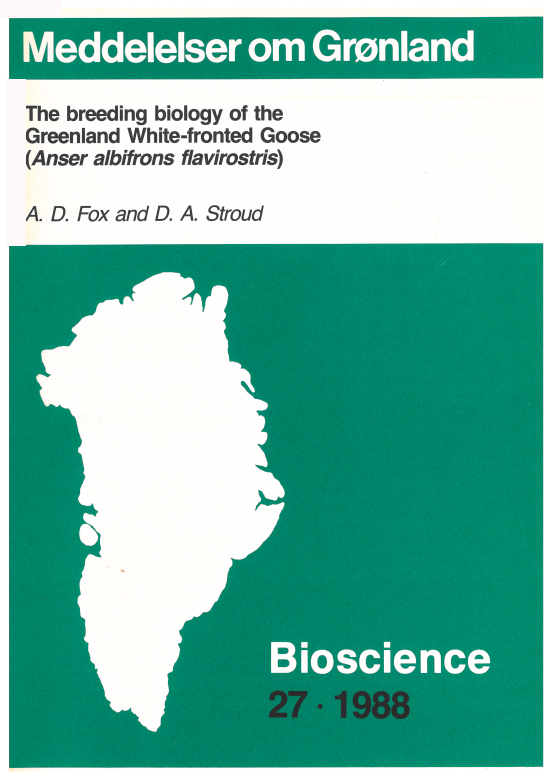The breeding biology of the Greenland Whitefronted Goose (Anser albifrons flavirostris)
DOI:
https://doi.org/10.7146/mogbiosci.v27.142368Abstract
The breeding biology of the Greenland Whitefronted Goose (Anser albifrons flavirostris) was studied during two expeditions to Eqalungmiut nunat, West Greenland (67°N) during 1979 and 1984. Nest sites were situated close to or overlooking wetlands which constituted the feeding area of the attendant ganders during incubation.
Mean date of clutch initiation in 1984 (11 June) was delayed due to the late spring thaw compared with 22 May in 1979 when spring conditions were more typical of most years. Nesting occurred significantly more often above 400 m in 1984 than in 1979 when most nesting attempts were below 200 m and the significance of this is discussed. Productivity in terms of brood size and percentage young amongst winter flocks did not differ between 1979 and 1984. Greenland Whitefronts are solitary nesting with nest densities lower than recorded for other races of Whitefront. Modal clutch size of six is typical for the species and there are no apparent differences in egg size compared with other races. During incubation, both parents show strong diurnal rhythms of alertness, feeding and roosting activity which may be correlated with the activity of the most important predator of eggs, the Arctic Fox Alopex lagopus.
Discussion of this and other studies of the Greenland Whitefront suggest that the pre-nesting feeding may reduce the impact of poor spring weather on productivity, but that the high percentage of time spent by the female incubating and the dramatic observed predation rates may explain the characteristically low productivity of the race compared to other grey geese.

Downloads
Published
Issue
Section
License
Coypyright by the authors and the Commision for Scientific Research in Greenland / Danish Polar Center/Museum Tusculanum Press as indicated in the individual volumes. No parts of the publications may be reproduced in any form without the written permission by the copyright owners.

